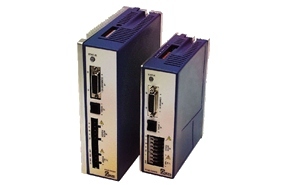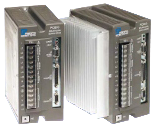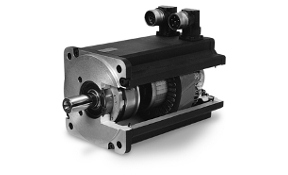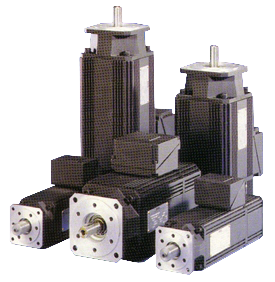P7000 Series Stepper Drive
The P7000 series stepper drive offers unsurpassed system smoothness, functionality, performance and innovation. Available for AC(P70360) or DC(P70530) operation, these microstepping drives are designed to power 2-phase NEMA stepper motors. They offer unique features that are ideal for single or multi-axis applications requiring high-speed performance or low-speed smoothness.
P70360 AC Stepper Drives:
- P70360-SD:
- Conventional step and direction interface
- Dedicated inputs for jog+/-, enable and step/direction control
- User-provided pulse train to rotate the motor
- P70530-PN adds to the base drive:
- Indexing capability, allowing up to 63 independent, programmable moves
- Modbus RTU compatibly
- P70360-R4 adds to the base drive:
- Indexing capability, allowing up to 63 independent, programmable moves
- Modus RTU compatibly
- Adds an RS-485 interface
- Integral power supply
- Input voltage: 120 to 240 VAC (1 phase, 50/60 Hz) for a broad range of power sources
- Continuous current: 2.5 Amps; microstep peak current: 3.5 Amps
- Max shaft power: 525 W
- Speed range: 0 to 50 rev/sec
- Motor inductance: 50 to 200 mH (320 VDC BUS), 7 to 30 mH (160 VDC BUS)
- 9 programmable inputs
- Easy-to-use graphical interface
- Open loop stall detection
P70530 DC Stepper Drives:
- P70530-SD:
- Conventional step and direction interface
- Dedicated inputs for jog+/-, enable and step/direction control
- User-provided pulse train to rotate the motor
- P70530-PN adds to the base drive:
- Indexing capability, allowing up to 63 independent, programmable moves
- Modus RTU compatibly
- Input voltage: 20 to 75 VDC
- Continuous current: 5 Amps; microstep peak current: 7.1 Amps
- Max shaft power: 300 W
- Speed range: 0 to 50 rev/sec
- Motor inductance: 2 to 15 mH
- 9 programmable inputs
- Easy-to-use graphical interface
- Open loop stall detection
Benefits
- Ideal solution for single or multi-axis applications that require high-speed performance or low-speed smoothness
- 9 programmable inputs, available indexing model and easy-to-use graphical interface simplify configuration for complex machine requirements
- Integral stall detection eliminates the need for expensive external sensors or feedback, reducing system cost by up to 30%
- Multistepping™ feature inserts fine micro-steps to smooth coarse low-speed motion without having to redesign machine control architecture
- Mid-band anti-resonance control reduces the negative effects of mechanical resonance, allowing you to get more out of a smaller motor and virtually eliminating nuisance stalls and machine downtime
- Dynamic smoothing quasi-S-curve algorithm reduces jerk, especially upon acceleration, increasing mechanical life and reducing energy consumption




